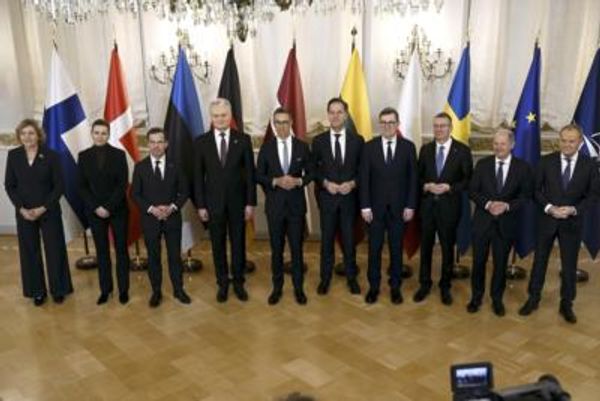Ever since its successful transformation from seedy party town to a one-stop destination for foodies, culture hunters, and the well-heeled, Vegas’ reputation has continued to surpass expectations. I mean, did you hear Lady Gaga now has a residency? And that David Chang just opened Momofuku’s first West Coast location there?
With food, shopping, and nightlife squared away, Vegas’ attention is now turning to a historically trickier domain, at least when it comes to connecting with the masses: fine arts. Once upon a time, restaurants and bars in Vegas were just places you’d go to get much-needed sustenance before hitting the casino floor; hotel lobbies and corridors were purely functional spaces you had to navigate to reach your bed for the night. But in the new golden age of Las Vegas, every wall, corridor, ceiling, and lobby is an empty canvas. And behind the scenes, a small but dedicated team is hard at work turning every inch of it into a public art gallery.
Among these visionaries is Tarissa Tiberti, executive director of MGM Resorts Art and Culture, who overlooks MGM’s multi-million-dollar collection across its US and international properties. Tiberti’s job is to manage the collection, commission new works, and oversee MGM’s ongoing visual arts-focused partnerships, like the one with Art Basel.

She also oversees MGM’s new artist residency program, launched last year. The first artist in residence, Japanese artist Kisho Mwkaiyama, spent six months creating a series of works in a new studio next to the Bellagio Gallery of Fine Art (BGFA). At Mwkaiyama’s request, all 24 paintings are now on display at Mandalay Bay Convention Center. The location of the new studio was also a kind of test: it is across from the entrance to the pool at the Bellagio, which means anyone walking past can take a peek inside. Mwkaiyama had a captive audience almost every day; he even answered questions from curious guests as he worked.
I spoke with Tiberti about her role in turning Vegas into a visual arts destination.
How do you go about curating and selecting art for each MGM property? Do you have rough guidelines that you need to adhere to, depending on the design and mood of each property?
I always start off with MGM’s mission core mission of diversity and inclusion. In other words, trying to provide a certain level of entertainment and experience for all our guests. And then I narrow it down depending on each property and its branding. Of course, there are so many things to consider when curating art for a place like Vegas versus a gallery or museum.
First of all, it’s all public art, which means we have to think about how and where we position works. Secondly, we need to think about protecting the works—because you know, sometimes people will want to touch works or climb them, or whatever. We need to keep these things in mind.
For example, with Mwkaiyama’s paintings in the Mandalay Bay Convention Center, he wanted that space because it gets a lot of natural light. But there are thousands of people walking through that space every week, so we need to think about how to protect the works. We’re thinking about putting up some kind of barrier so people don’t get too close.
Another example was Nick Cave’s “Soundsuit.” [This was bought by the Bellagio as part of its permanent collection in 2014. It's a giant suit covered in buttons, fabric, and wire.] We wanted to display it on Via Bellagio [the hotel's mini-shopping district] but we had to think about how to display it because it is so fragile. We’re talking about a public walkway, so we couldn’t exactly put it up the way one would in an art gallery. In the end, we put it in a vitrine.
Can you give me an example of a time you created an art program for a property that reflected its location or design features?
MGM Springfield is a great example. We have an ongoing commitment to work with local and regional artists wherever possible, and this was true here. With Mia’s [Pearlman, a Brooklyn-based artist who was commissioned to create a piece titled “The Flying Tidings Whirled"] we were looking for an ode to the tornado that devastated the city a few years ago. Mia took the title from an Emily Dickinson poem [“There Came a Wind Like a Bugle”], also an ode to Springfield. [Pearlman's work features aluminum plates in the form of a spinning tornado. The piece was inspired by Springfield’s resiliency in the wake of the 2011 tornado.]

With Jeppe Hein’s “Bench of Expectation,” it’s another example of our attempt to recognize that we are responsible for the communities that we exist in—and to make sure we’re supporting that community and everyone in it. [Hein is known for his whimsical sculptures often made for public spaces. The "Bench of Expectation" is an eye-catching, elongated red bench prominently displayed in MGM Springfield's outdoor plaza, inviting people to sit on it and interact with its many loops and slides.] It’s just saying to people to come and hang out and have a good time.
Chairman and CEO of MGM Resorts International, James Murren, is also an art history major. How often does he weigh in on decisions related to the art program and collection?
It’s fantastic for us to have somebody at the top of the company who is so passionate about art. He usually goes with our guidance on most things, but if it’s something larger—like the Henrique Oliveira tree root hanging from the Park MGM lobby ceiling—then he’ll be very much involved. For example, the David Hockney prints we have [also at Park MGM], he saw those at a show at the Tate Modern in 2018 and just thought they were the absolute right fit. So that was all his idea.
He understands that it’s not about having big-name artists just for the sake of it. It’s not just shiny things. He recognizes the importance of a collection that tells a story and speaks to guests.
Has the role of art become more important in Vegas as it has continued its shift towards a more inclusive and open destination catering to a wider range of tastes and markets?
Yes, definitely. Art—especially public art—is more expected now. The Bellagio gallery has been here since day one, of course, but it used to be a special occasion thing. As in, you’d make a day of it to go and see a Monet. The art was unattainable. These days, art in Vegas is not elite. We’re trying to make it public, fun, and engaging.
And I think people really appreciate that. They like walking around and seeing these works just pop up. And it’s important culturally, too—if they only do one trip a year, for example, they know that if they come to Vegas they can get different kinds of experiences without necessarily going out of their way. With art, especially, it’s all public, free, and open. Everyone can benefit.

What’s been the most challenging project to work on, and why?
Some of the exhibits at the BGFA have been challenging. If you think about it, it’s this tiny gallery in the middle of a casino that was built to showcase small pieces of art, paintings, that kind of thing.
So when we tried to put on something like the “Primal Water” exhibition in June last year—that was hard. [The exhibition highlighted Japanese artists whose works connected to the theme of water. It included 28 works in various forms, including painting, sculpture, photography, site-specific installation and film.]
The work by Yasuaki Onishi ["Vertical Emptiness BG, 2018," a large installation created from local Mesquite tree branches suspended from the ceiling] was somewhat of a challenge. I remember speaking to the horticulture team and explaining that we needed to source trees native to Las Vegas for this work. They understood, but they presented us with mulched trees at first. And then we were like, no, no, we want the entire tree. So they had to go back and do it all over again.
The final effect was mesmerizing. Onishi coated them in this substance—urea—that made them resembled hard, crystallized snow. People didn’t necessarily know what they were looking at, but everyone who walked through there appreciated it. You could see it on their faces.
What are some of your favorite pieces in the MGM collection?
Oliveira’s tree sculpture is definitely up there. And the Frank Stella piece behind the front desk at Vdara ["Damascus Gate Variation I"]. It’s from the 1970s but you’d never think that seeing it up there. The colors are so vibrant, neon-ish—for Vegas, it’s perfect. It looks like it was meant to be there.







